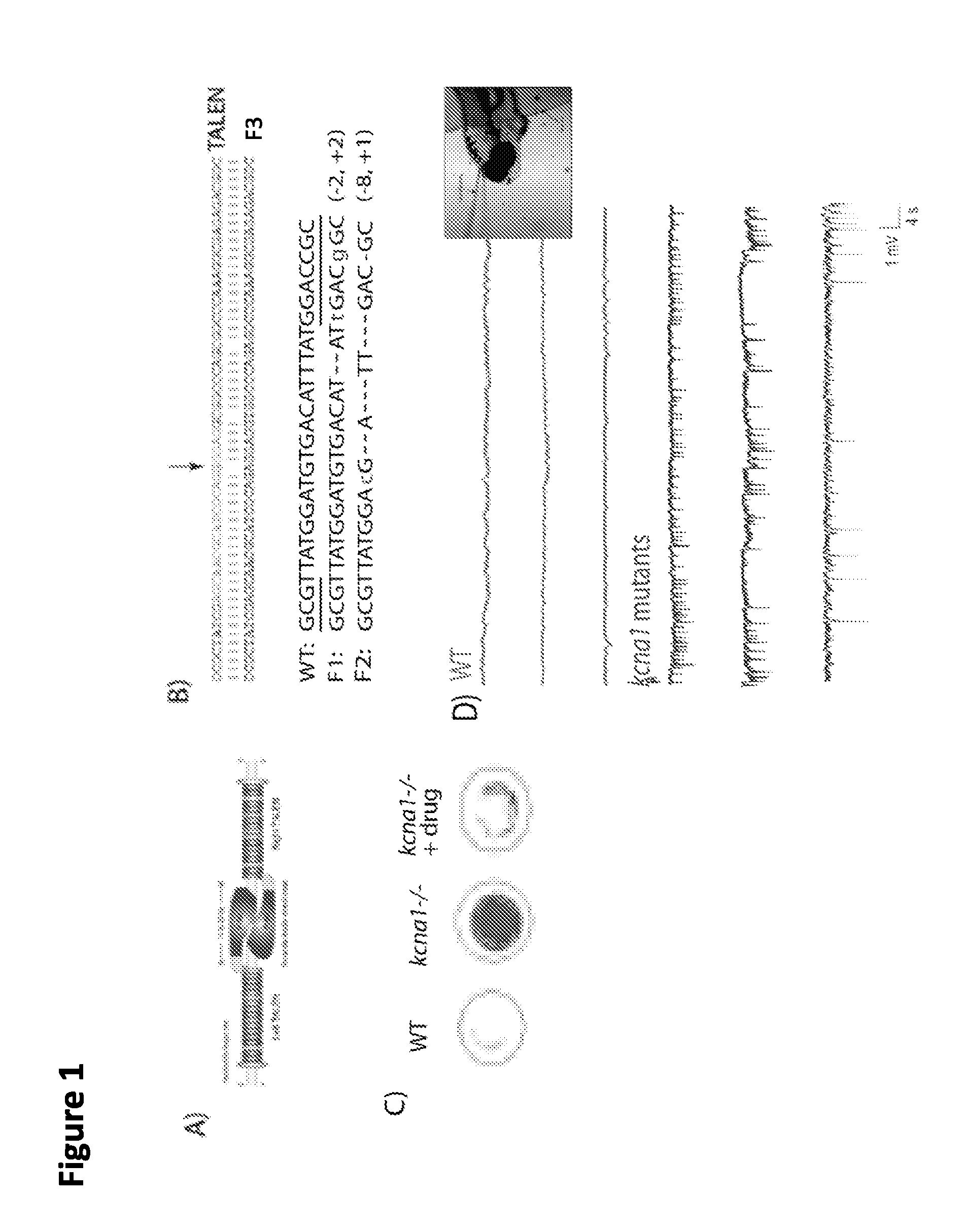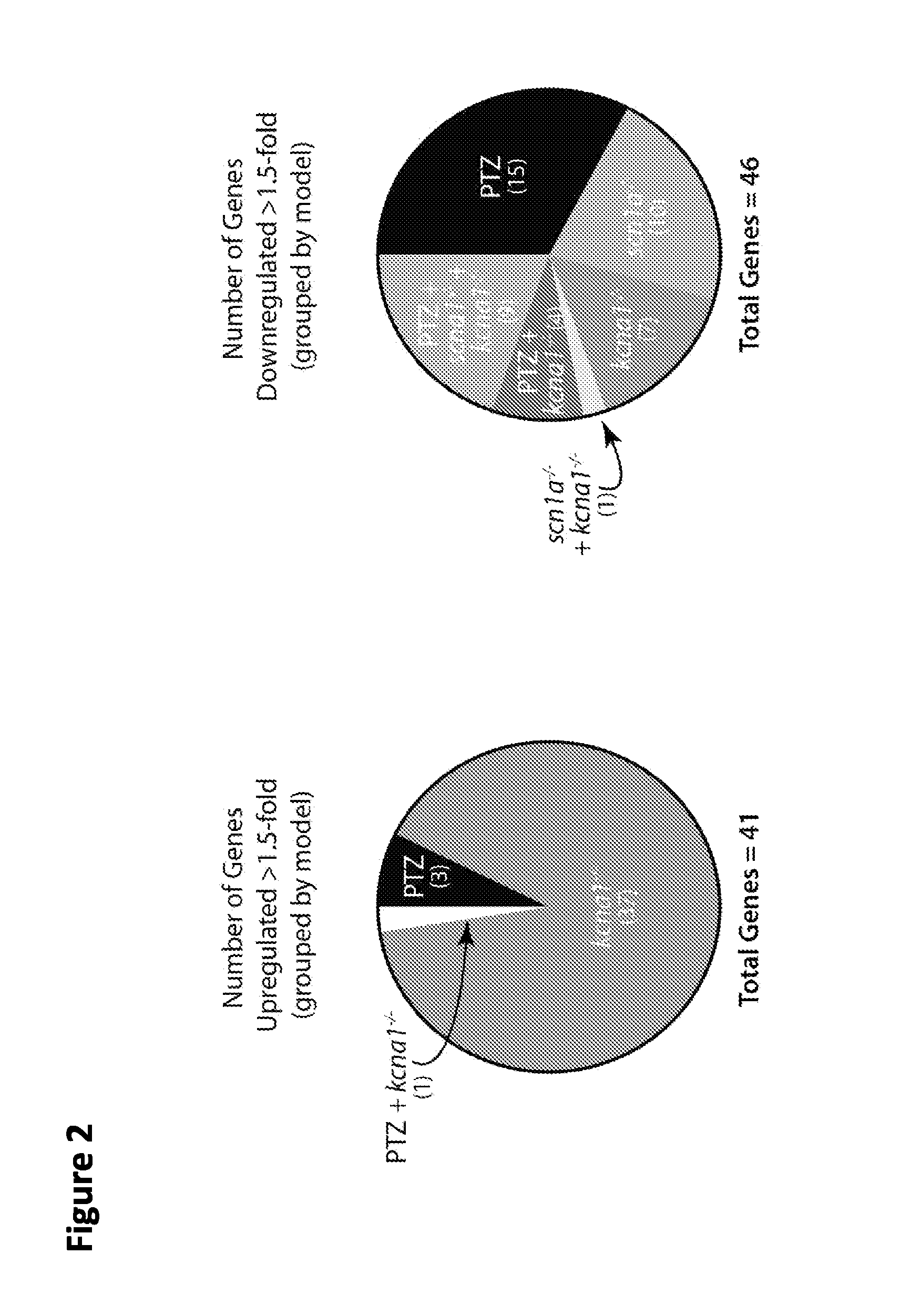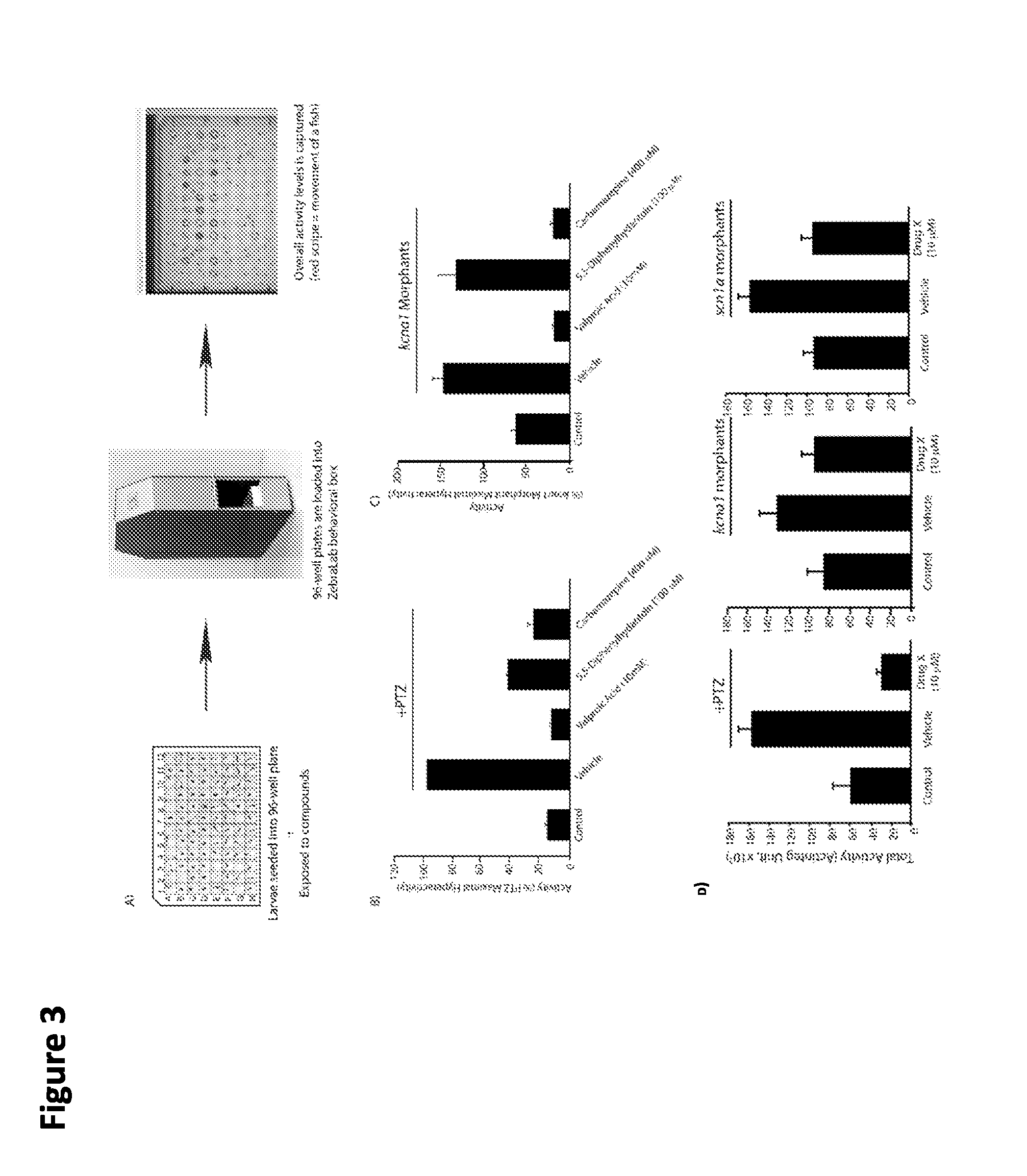Metabolism-based drug screening platform in bioengineered zebrafish
- Summary
- Abstract
- Description
- Claims
- Application Information
AI Technical Summary
Benefits of technology
Problems solved by technology
Method used
Image
Examples
example 1
Construction of Human Disease Models (Such as Epilepsy) in Zebrafish
[0155]In general, published literature is used to identify genes that are associated with disease states in humans. Candidate genes are ranked based on the strength of the data indicating causality. For example, genes were loss of function is strongly linked to the etiology of disease are ranked higher than genes that were uncovered in genome wide association studies (GWAS) but of unknown significance. Bioinformatic tools are then employed to identify zebrafish orthlogs of top candidate human genes. Due to genome duplication that occurred in teleosts, many human genes have two zebrafish orthlogs. Sequence similarity is then examined between the paralogs, with paralogs that are highly conserved ranked lower than paralogs with significant variation in the genome. In some cases, variation in tissue expression overrides genetic data (e.g., highly similar paralogs that are differentially expressed in the brain and periph...
example 2
Mitochondrial Genes are Differentially Regulated Across Three Models of Epilepsy
[0159]This Example shows that mitochondrial function is a valid target for the identification of drugs to treat epilepsy because mitochondrially-linked genes are dysregulated in three zebrafish models of epilepsy.
[0160]A custom RT2 Profiler PCR Array (Qiagen) was created for zebrafish that profiles 84 genes involved in biogenesis and function of the mitochondria. The genes included in the array are regulators and mediators of mitochondrial molecular transport (for example, electron transport chain, oxidative phosphorylation, maintenance of membrane polarization and potential for ATP synthesis), the intrinsic apoptosis pathway that is activated by intracellular damage signaling, and genes responsible for translation and folding of proteins across the outer and / or inner mitochondrial membrane and matrix.
[0161]All morpholinos were designed and engineered by Gene Tools, LLC (Philomath, Oreg.). Slice-targetin...
example 3
Drug Screening Using Epileptic Zebrafish
[0165]This Example utilizes the drug screening assay disclosed herein using morpholino-injected embryos to transiently knockdown genes of interest. Here, we compare three “epileptic” models for phenotypes in the behavioral assay: pharmacological-induction model (PTZ) and two genetic knockdown models (kcna1 and scn1a morphants).
[0166]Larvae were treated with morpholinos to kcna1 and scn1a as described above.
[0167]Zebrafish larvae (5 days post fertilization) were seeded into 96 well microliter plates containing vehicle solution and monitored for 20 minutes for hyperactivity. Morphants and WT zebrafish were exposed to drug for 10 minutes preincubation and then assayed for changes in hyperactivity for 20 minutes (Zebralab box). Drugs that decreased hyperactivity behavior by 40% in morphants were identified as “positive hits.”
[0168]These positive hits were then verified by conducting a dose-response relationship using hyperactivity as readout. Drug...
PUM
| Property | Measurement | Unit |
|---|---|---|
| Permeability | aaaaa | aaaaa |
Abstract
Description
Claims
Application Information
 Login to View More
Login to View More - R&D
- Intellectual Property
- Life Sciences
- Materials
- Tech Scout
- Unparalleled Data Quality
- Higher Quality Content
- 60% Fewer Hallucinations
Browse by: Latest US Patents, China's latest patents, Technical Efficacy Thesaurus, Application Domain, Technology Topic, Popular Technical Reports.
© 2025 PatSnap. All rights reserved.Legal|Privacy policy|Modern Slavery Act Transparency Statement|Sitemap|About US| Contact US: help@patsnap.com



